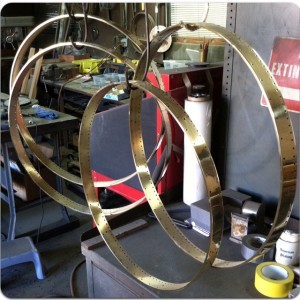What is Rack Plating?
 Rack plating helps with complex electroplating jobs or delicate workloads that are incompatible with the barrel plating method. During this procedure, mounting objects on fixtures, or “racks”, and lowering them into a solution gives them even exposure to a plating current. Parts suited for the plating rack’s design must be taken into consideration.
Rack plating helps with complex electroplating jobs or delicate workloads that are incompatible with the barrel plating method. During this procedure, mounting objects on fixtures, or “racks”, and lowering them into a solution gives them even exposure to a plating current. Parts suited for the plating rack’s design must be taken into consideration.
Length – This dimension is the distance from the cathode bar to the bottom of the rack. Correct length is essential for a more uniformed finish and although each plating project is different, the rack should be several inches above the bottom of the tank while objects being plated should be held at least two inches below the tank’s surface.
Width – This dimension will vary considerably, but is also important. Improper width may damage a rack due to automation jams and slow production.
Thickness – This dimension is important because there must be enough room between the anodes for the holding of parts. In addition, for manual racks, thickness will affect an employee’s ability to move racks from tank to tank.
Benefits and Considerations:
As stated above, rack plating can be an effective method for electroplating large or complex objects that may not fit or tumble well with a barrel plating workload. In addition, is very unlikely for damage to occur during the process, so fragile objects are also a great candidate for rack plating. However, it is important to note that rack plating is a more labor intensive procedure which typically costs more money. In addition, due to variable currents within a plate bath, uniformity of the plate layer is harder to achieve.
If you are unsure of which plating method is best for you, give us a call at (314) 776-0542 and our metal plating professionals will be happy to provide you with advice.
References:
Heimke, Steen. “Fundamentals of Plating Rack Design.” Metal Finishing 105.10 (2007): 614-23. Web. 4 Aug. 2015.


